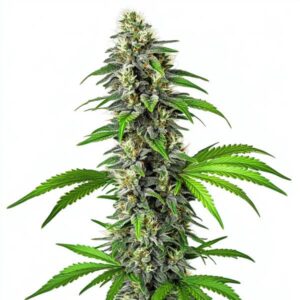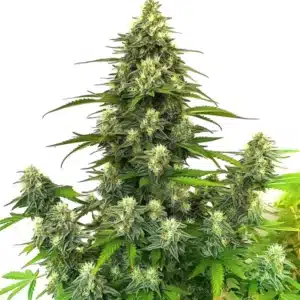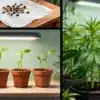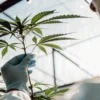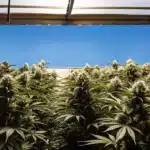
How to Germinate Cannabis Seeds Indoors: A Step-by-Step Guide
Preparation and Equipment
Tools and Materials
Germinating cannabis seeds indoors requires a few essential tools and materials to ensure that your seeds have the optimal conditions for sprouting. If you’re wondering how to germinate cannabis seeds indoors, it all starts with having the right setup. First and foremost, you’ll need high-quality cannabis seeds. Make sure to choose reputable sources to ensure the seeds are viable.
Next, gather your germination containers. These could be small pots, seedling trays, or even recycled items like egg cartons. Ensure your containers have drainage holes to prevent waterlogging, which can harm the seeds. A good potting mix is also crucial; look for one that is light, airy, and specifically designed for seedlings.
Recommended Strains
Fat Bastard
|
|
THC | 30% - 38% (High) |
|
|
Type | Feminized |
|
|
Yield | High |
|
|
Phenotype | 50% Indica / 50% Sativa |
Fat Bastard Auto
|
|
THC | 30% - 38% (High) |
|
|
Type | Autoflowering |
|
|
Yield | High |
|
|
Phenotype | 50% Indica / 50% Sativa |
You will also need a few additional items such as a spray bottle for misting, a humidity dome or plastic wrap to maintain moisture, and a light source if you’re germinating in a darker area. Light is essential for the cannabis seedling stage, as it helps in the early growth of the plant.
Lastly, prepare a thermometer and hygrometer to monitor temperature and humidity levels, as these factors play a significant role in the success of germination. By having all these tools and materials ready, you set the stage for a successful indoor germination process.
Promos & Deals
Germination Methods
Paper Towel Method
To be covered by our Germination Guarantee, use the Plate Method from our Germination Guide. It’s the most reliable way to get the highest success rate.
The paper towel method is one of the most popular techniques for germinating cannabis seeds indoors. This method is simple, effective, and allows you to monitor the progress of your seeds closely. Begin by dampening a couple of paper towels with distilled water. Be careful not to soak them; they should be moist but not dripping wet.
Next, place your seeds on one of the damp paper towels, leaving some space between each seed. Fold the other half of the towel over the seeds, creating a sandwich-like structure. Place this setup on a plate and cover it with another plate or a plastic wrap to maintain humidity. Ideally, keep the plate in a warm, dark place, as warmth is essential for triggering the germination process.
Check the seeds daily to ensure the paper towels remain moist. After a few days, you should start seeing the seeds crack open, and small taproots will emerge. Once the taproot reaches about half an inch long, it’s time to transfer them into your growing medium. This method not only boosts germination rates but also allows you to keep a close eye on the seeds’ progress.
Soaking Technique
Another effective method is the soaking technique, which involves directly soaking the seeds in water. Start by filling a glass of distilled water and placing your seeds in it. Allow them to soak for 12 to 24 hours. During this time, the seeds will absorb water, swelling up and preparing for germination.
After soaking, remove the seeds from the water and gently place them in your chosen growing medium, about half an inch deep. Make sure the medium is moist, but not soggy, to create an ideal environment for the seeds. Cover the seeds lightly with soil and mist them with water to ensure the moisture remains consistent.
This method is straightforward and minimizes the handling of seeds, which can be delicate. After a few days, you should see signs of life as the seeds begin to sprout. Keep an eye on moisture levels and provide warmth to facilitate the germination process.
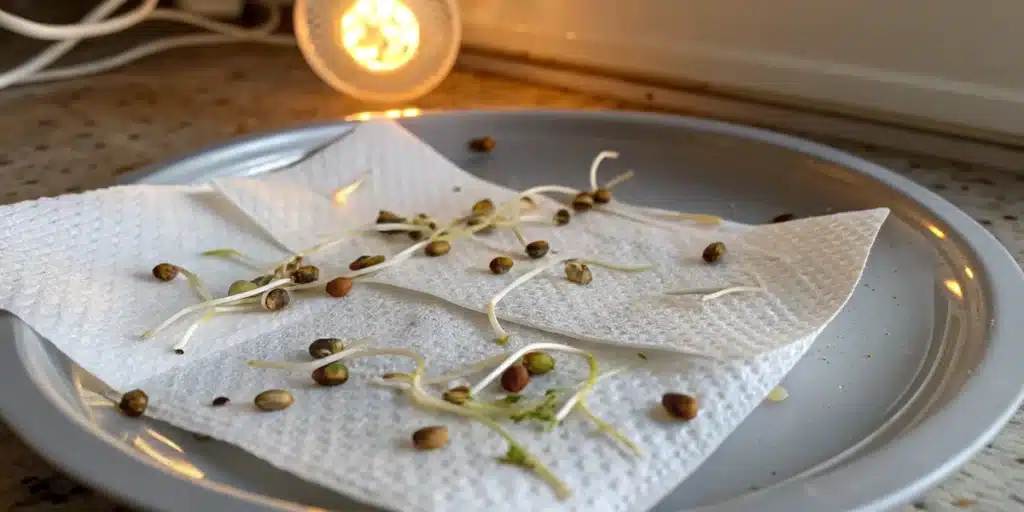
Transition to Seedling Stage
Key Indicators
Once your cannabis seeds have germinated successfully, the next exciting phase is transitioning them into the seedling stage. Understanding the key indicators that your seeds have sprouted is essential. The most obvious sign is the emergence of the taproot, which is usually accompanied by the seed shell cracking open.
As the taproot grows, you will soon notice the first set of true leaves, also known as cotyledons. These small, rounded leaves will appear shortly after the taproot has established itself in the growing medium. Pay attention to the color and health of these cotyledons; they should be vibrant green and firm to the touch.
At this stage, it’s vital to provide adequate light to the seedlings. If you’re growing cannabis seedlings indoors, ensure they receive at least 18 hours of light daily. This promotes healthy growth and prevents the seedlings from becoming leggy. Additionally, monitor the temperature and humidity levels in the growing area to keep them within optimal ranges. Maintaining a stable environment will significantly enhance the growth rate during this critical period.
Best Mediums to Plant Germinated Seeds
Once your cannabis seeds have successfully germinated and the taproot has emerged, it’s time to choose the best growing medium to transplant them into. For anyone learning how to germinate cannabis seeds indoors, this step is just as important as the germination process itself. It’s critical for ensuring a smooth transition into the seedling stage and promoting healthy early development. Picking the right medium can make all the difference in root health, moisture retention, and nutrient uptake.
Soil, Coco, or Starter Plugs?
There are several popular mediums you can use for newly germinated cannabis seeds, each with its own benefits and drawbacks. Here’s a quick comparison to help you choose the best option for your grow setup:
- Light Potting Soil: A soft, airy seedling-specific mix is a great starting point. It provides a gentle environment that doesn’t overwhelm young roots. Make sure it’s low in nutrients to avoid burning the seedlings.
- Coco Coir: This sterile, fibrous medium retains water well and offers excellent aeration. However, it contains no nutrients, so you’ll need to start feeding earlier with a balanced nutrient solution.
- Starter Plugs (e.g., Jiffy Pellets): These are pre-formed plugs made from peat or coco. They’re beginner-friendly, retain moisture well, and make transplanting a breeze. Great for minimizing transplant shock.
- Rockwool Cubes: Commonly used in hydroponics, rockwool offers strong water retention and airflow. However, it requires pH adjustment and isn’t biodegradable, so it’s better suited for experienced growers.
For most beginners, starter plugs or a light soil mix offer the most forgiving conditions and the highest success rate. Whichever medium you choose, make sure it drains well and remains lightly moist not soggy.
| Medium | Pros | Cons | Recommended For |
|---|---|---|---|
| Light Potting Soil | Easy to find, gentle on roots, beginner-friendly | Can retain too much moisture if poorly drained | Beginners using organic or soil grows |
| Coco Coir | Great drainage and aeration, inert and clean | Requires additional nutrients from early on | Intermediate growers using coco systems |
| Starter Plugs (Jiffy, peat, coco) | Pre-formed, easy to handle, consistent moisture levels | Can dry out quickly if not monitored | Beginners and anyone transplanting easily |
| Rockwool Cubes | Excellent water retention, perfect for hydroponics | Needs pH adjustment, not biodegradable | Hydroponic setups and experienced growers |
Tips for Successful Transplanting
Transplanting a germinated seed is delicate business. The taproot is extremely fragile and any damage can stunt development or kill the seedling altogether. To transplant successfully, follow these simple tips:
- Handle with care: Always use clean, sanitized tools or tweezers to gently move the seed by the shell not by the taproot.
- Correct depth: Plant the seed about ½ inch (1.25 cm) deep in your chosen medium with the taproot facing downward.
- Initial watering: Moisten the medium lightly after transplanting. Avoid overwatering, as soggy conditions can lead to damping-off disease.
- Provide light promptly: Once transplanted, place your container under grow lights right away to guide the seedling upward and prevent stretching.
A stable, warm, and humid environment will help your young plant settle in quickly and thrive as it enters the seedling stage.
Indoor Lighting for Germinated Seeds
Lighting is one of the most important factors for strong seedling development. Once your cannabis seed has cracked and been placed into its growing medium, it will soon begin to seek light. Providing the correct light spectrum, intensity, and duration during this early stage can prevent stretching, promote strong root development, and set the tone for a healthy plant.

Best Light Spectrum for Early Growth
In the seedling stage, cannabis responds best to a cooler, blue-dominant light spectrum. This mimics the natural light conditions of early spring, encouraging short, stocky growth and strong stems. LED grow lights that offer a full spectrum with emphasis on the 4000K–6500K range are ideal for this phase.
Avoid high-intensity red or warm-spectrum lights at this stage, as they can cause seedlings to stretch unnecessarily. Fluorescent lights (like T5s or CFLs) are also effective for early growth, as they provide gentle, evenly distributed light without excessive heat.
Positioning and Photoperiod Tips
Proper light positioning and timing can make or break your seedling phase. For most LED or fluorescent grow lights, keep the fixture 4–8 inches (10–20 cm) above the seedling canopy. This prevents stretching while avoiding light burn.
During this stage, cannabis seedlings thrive under an 18/6 light cycle 18 hours of light followed by 6 hours of darkness. This mimics long daylight hours and encourages steady vegetative growth. Be consistent with your photoperiod, and if using timers, ensure they are properly calibrated to avoid light leaks or interruptions.
As the seedlings mature and grow stronger, you can gradually increase light intensity and adjust height based on plant response. Monitoring leaf position and color will help you determine whether your lighting setup is just right.
Tips for Successful Transplanting
Transplanting a germinated seed is delicate business. The taproot is extremely fragile and any damage can stunt development or kill the seedling altogether. To transplant successfully, follow these simple tips:
- Handle with care: Always use clean, sanitized tools or tweezers to gently move the seed by the shell not by the taproot.
- Correct depth: Plant the seed about ½ inch (1.25 cm) deep in your chosen medium with the taproot facing downward.
- Initial watering: Moisten the medium lightly after transplanting. Avoid overwatering, as soggy conditions can lead to damping-off disease.
- Provide light promptly: Once transplanted, place your container under grow lights right away to guide the seedling upward and prevent stretching.
A stable, warm, and humid environment will help your young plant settle in quickly and thrive as it enters the seedling stage.
FAQS
What is the best method for germinating cannabis seeds indoors?
Both the paper towel method and the soaking technique are effective for germinating cannabis seeds indoors. Choose the one that best suits your preferences and setup.
How long does it take for cannabis seeds to germinate?
Typically, cannabis seeds take between 2 to 7 days to germinate, depending on the method used and the environmental conditions.
What should I do if my cannabis seeds don’t germinate?
If your seeds don’t germinate after a week, check the moisture levels, temperature, and ensure you’re using viable seeds. If conditions were not optimal, you might want to try again with new seeds.





